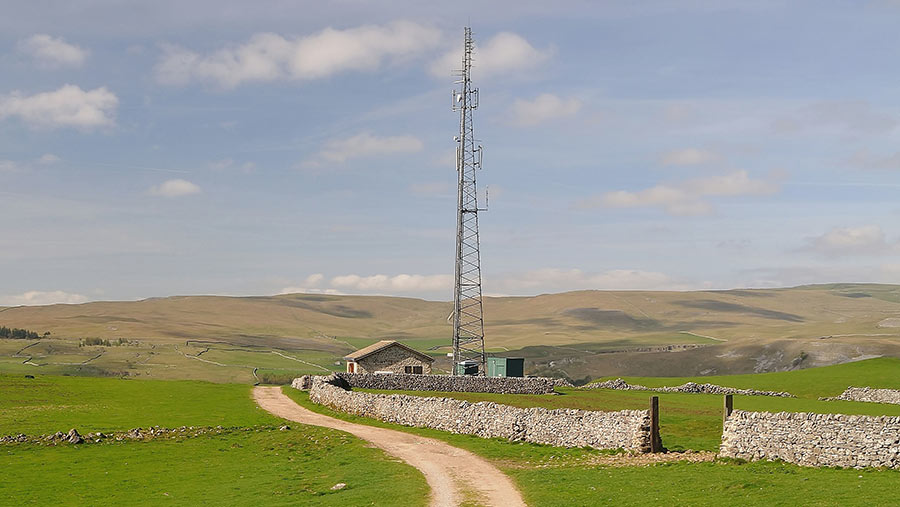How to make sure your telecom mast agreement is fair
 © Philip Silverman/Shutterstock
© Philip Silverman/Shutterstock Mobile phone operators and landowners are locked in a battle of nerves over what is a fair rental for a telecom mast.
Paul Williams, telecoms specialist with Strutt & Parker, explains how farmers should respond in this fast-evolving sector.
Why has the introduction of the Electronic Communications Code proved controversial?
The code, introduced in 2017, was supposed to help improve the digital economy and connectivity by giving operators new rights to secure greenfield and rooftop sites for telecoms equipment.
However, at least 90% of the applications we see from operators are concerned with negotiating existing rents downwards rather than securing new sites.
See also: What mast site owners need to look out for under new rules
What difference does this make to landowners?
Farmers were receiving rents of £5,500 to £6,500 a year over a 10-year agreement, but operators are now making offers for less than £50 for the whole period of both new and existing agreements.
They argue that, under the new code, payments only need to reflect the land’s agricultural value, which may equate to a small sum due to the mast occupying only a small piece of land.
Most farmers feel these sums do not reflect the impact a mast can bring. For example, operators and their contractors can demand 24/7 access without notice, which presents problems.
A number of cases are currently going through the Upper Tribunal involving landowners who have rejected the offered rent.
Do operators have the right to push rents down so far?
The government has said that landowners should receive a fair payment.
In many cases, operators might be overstepping the mark by seeking to impose much lower rents on existing sites.
There are certain conditions that operators need to meet before they can seek to impose new code rights – the main one being that the public benefit of an improved electronic communications service outweighs the loss of the landowner’s rights.
If a mast is already in operation, it seems unlikely that striking a new agreement will offer any public benefit.
There is also disagreement between operators and land agents over the appropriate methodology for working out rents.
What has happened so far?
The most significant tribunal case for farmers so far was CTIL v Compton Beauchamp Estates.
The tribunal said in April that the operator’s suggested rent of £2.96 a year was a tiny sum and dismissed the methodology of basing rents on agricultural values as unrealistic.
This could pave the way for operators to be forced to pay more sensible rents, although as yet there is little sign of this happening.
The critical issue is determining the most appropriate method of valuation in order to calculate rental figures.
What should a farmer do if…
…they’re contacted by an operator about renewing an agreement?
Typically landowners are receiving a letter which offers a significantly reduced rent and threatens to take the case to tribunal if the landowner does not agree.
The first step should be to write to the operator asking for an undertaking that it will cover the cost of the landowner seeking advice from a professional.
…they’re approached for a new agreement?
Seek advice for navigating the complex negotiations. If a landowner’s priority is improved connectivity then they may be willing to accept a low rental figure, but if not, then they are likely to need help to challenge such an approach.
Be careful not to let anyone on your land to check if a site is suitable for telecoms equipment, even if that approach feels informal.
Where are we now?
- Six tribunal cases have been heard so far and appeals are likely in some instances
- Not all cases are relevant to farmers – some focus on masts on urban buildings
- About 20 more cases are in the pipeline
- Cases are taking a long time to be determined
- An appropriate method of valuation is still to be approved
- The complexity of the market means taking specialist advice is important
